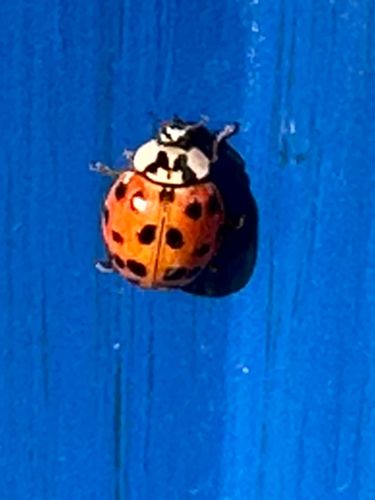Asian Lady Beetle (or Harlequin Ladybird)
Scientific Name: Harmonia axyridis
Order & Family: Coleoptera, Coccinellidae
Size: 5-8 mm (approx. 0.2-0.3 inches)

Natural Habitat
Widely distributed; found in agricultural fields, gardens, woodlands, and urban areas. Often aggregates on sunny sides of buildings in autumn.
Diet & Feeding
Primarily predatory, feeding on aphids, scale insects, and other soft-bodied arthropods. Can also feed on pollen, nectar, and fruit if prey is scarce.
Behavior Patterns
Known for their varied color patterns (red, orange, yellow, black) and number of spots. They are active hunters, both as larvae and adults. In autumn, they tend to aggregate in large numbers on buildings, seeking shelter for overwintering. They can bite if provoked, though not harmful to humans. When disturbed, they may emit a foul-smelling, yellowish fluid (reflex bleeding).
Risks & Benefits
Benefits: Highly effective biological control agent for agricultural pests like aphids, reducing the need for chemical pesticides. Risks: Can become a nuisance when they overwinter in homes, emitting an unpleasant odor and potentially staining surfaces. They can outcompete native ladybug species for food resources, causing ecological concerns. Their bite, while not medically significant, can be uncomfortable.
Identified on: 10/21/2025